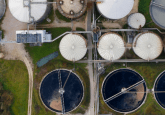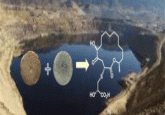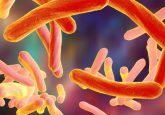River contamination: a growing cause of antibiotic resistance?

A global study has uncovered a disturbing level of antibiotic contamination in rivers, one of the prevalent causes of antibiotic resistance.
A worldwide study into the levels of antibiotics in the world’s rivers has found that 65% of the 711 sites tested contained at least one of the 14 antibiotics tested for, with concentrations exceeding safe levels by over 300-times in some of the test sites, proving river contamination could be one of the major causes of antibiotic resistance.
Led by the University of York (UK) and coordinated by John Wilkinson, the study involved flying 92 sampling kits to partner teams across the globe in 72 different countries. Each team then took samples from locations along their regional river systems. These samples were then frozen and returned to the University of York for testing. Rivers sampled included the Thames, Chao Phraya, Danube, Mekong, Seine, Tiber and Tigris. The team then compared their results to established AMR Industry Alliance “safe levels” that range from 20-32000ng/l depending on the antibiotic.
“The results are quite eye-opening and worrying, demonstrating the widespread contamination of river systems around the world with antibiotic compounds. “
Discussing the sheer scale of the study, Wilkinson stated that: “Until now, the majority of environmental monitoring work for antibiotics has been done in Europe, North America and China. Often on only a handful of antibiotics. We know very little about the scale of the problem globally. Our study helps to fill this key knowledge gap with data being generated for countries that had never been monitored before.”
The most common antibiotic detected was trimethoprim, used for urinary tract infections, which was detected in 307 of the sites, while ciprofloxacin was the most common antibiotic to breach safe levels, overcoming the limit in 51 samples. A site in Bangladesh was identified to contain a concentration of metronidazole 300-times over the safe limit.
-
Antibiotic resistance in the human gut microbiome
-
Bacteria hibernation: a new method for antibiotic tolerance
-
Editing antibiotics
While sites that breached safe limits were most commonly found in Asia and Africa, areas of North and South America and Europe displayed worrying levels of antibiotic contamination. Sites near water treatment facilities were particularly at risk, alongside regions suffering from war and political discourse, perhaps epitomized by the increased rate of antibiotic detection at the Israeli-Palestinian border.
Summarizing the results and highlighting the distressing implications, Alistair Boxall, theme leader of the York Environmental Sustainability Institute (University of York), stated that: “The results are quite eye opening and worrying, demonstrating the widespread contamination of river systems around the world with antibiotic compounds. Many scientists and policy makers now recognize the role of the natural environment in the antimicrobial resistance problem. Our data show that antibiotic contamination of rivers could be an important contributor. Solving the problem is going to be a mammoth challenge and will need investment in infrastructure for waste and wastewater treatment, tighter regulation and the cleaning up of already contaminated sites.”





